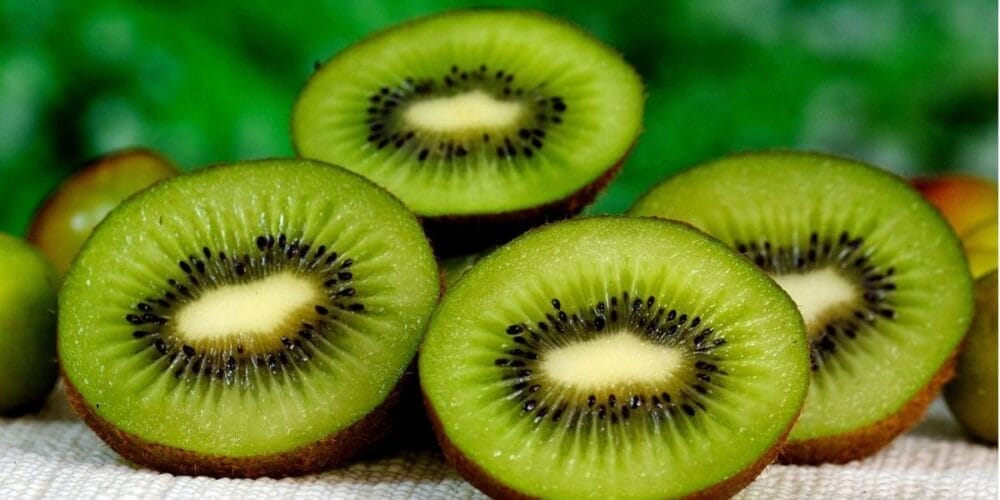Skin Of A Kiwi: Valuable And Nutritional Powerhouse in the Peel.

The skin of a kiwi is far more valuable than many realise.
While most people peel off the fuzzy layer before eating, the truth is that the thin brown skin of a kiwi fruit is edible, nutrient-dense, and offers a surprising number of health benefits.
Eating the skin not only increases the fruit’s nutritional value but also reduces food waste, making it a smart choice for both wellness and sustainability.
Table of Contents
Nutritional Powerhouse in the Peel
The kiwi’s skin contains a high concentration of dietary fibre, vitamins, and antioxidants. By eating the skin along with the flesh, you significantly boost your intake of essential nutrients. The fibre content in the skin is about 50% higher than that in the inner green portion. Fibre plays a crucial role in maintaining good digestive health, preventing constipation, and supporting weight management by promoting a feeling of fullness.
In addition to fibre, kiwi skin is rich in vitamin C, which supports immune system function, aids in wound healing, and improves skin health by promoting collagen production.
The skin also contains vitamin E, a strong antioxidant that helps protect cells from oxidative stress. Together, vitamins C and E act as a dynamic duo to shield the body against free radicals, reducing the risk of chronic diseases.
The peel also provides folate, potassium, and magnesium—nutrients essential for red blood cell formation, nerve function, and maintaining healthy blood pressure. Furthermore, kiwi skin contains flavonoids and polyphenols, plant-based compounds known for their anti-inflammatory and heart-protective effects.
Health Benefits of Eating Kiwi Skin
The benefits of consuming kiwi skin extend well beyond its nutrient profile.
Digestion:
It enhances digestion due to its high insoluble fibre content, which helps food move smoothly through the digestive tract. This property makes kiwi a popular choice for those who experience irregular bowel movements.
Antioxidants:
Antioxidants in the skin play a key role in maintaining the body’s defence system. Regular consumption can help strengthen immunity, decrease oxidative stress, and minimise cellular damage. The skin’s vitamin E content further supports radiant skin, helping to slow down signs of ageing such as wrinkles and dryness.
Heart Health:
Kiwi skin also contains compounds that promote heart health. The polyphenols and potassium in the peel help manage blood pressure and improve vascular function. Additionally, the fruit’s actinidin enzyme supports protein digestion, contributing to overall digestive efficiency. The combination of fibre and actinidin makes kiwi, especially with its skin, a great fruit for maintaining gut balance.
How to Eat Kiwi Skin Properly
Some people avoid kiwi skin because of its fuzzy texture, but there are simple ways to make it more enjoyable. Start by washing the fruit thoroughly under running water to remove dirt, pesticide residues, or fine hair. A soft brush or a clean towel can be used to gently scrub the skin.
If the fuzz still bothers you, opt for golden or yellow kiwi varieties, which have smoother, thinner skins and a sweeter taste. These are ideal for people new to eating kiwi skin. Once cleaned, you can eat the fruit whole—just bite into it like an apple—or slice it into round pieces. The texture may seem unusual at first, but many find it adds an interesting chewiness that complements the juicy inner flesh.
For an even smoother experience, blending the whole kiwi (with skin) into a smoothie is an excellent option. When blended with other fruits such as bananas or berries, the skin’s texture becomes almost unnoticeable while boosting the drink’s fibre and vitamin content.
Culinary and Creative Uses
Kiwi skin can also be used creatively in the kitchen. Beyond eating it raw, you can chop thin slices with the peel on for fruit salads or desserts. The skin’s earthy flavour balances the tart sweetness of the flesh, adding a layer of complexity to dishes. Dehydrated kiwi slices, complete with skin, make for an energising snack that retains most of the fruit’s nutrients.
Candied kiwi peels are another unique application. When simmered with sugar syrup, the peels transform into chewy, tangy-sweet treats that can be used as a garnish for cakes or yoghurts. In smoothies or juices, the fibrous peel lends extra body, making the drink both satisfying and nutrient-rich.
Precautions and Taste Considerations
Although kiwi skin is packed with nutrients, a few people may experience mild irritation or itching on the tongue or lips after eating it. This is often due to actinidin, a natural enzyme in kiwi, or the fruit’s tiny hair-like fibres. If you have sensitive skin or a known allergy to kiwi, it’s best to peel the fruit before eating. Always wash the fruit well, especially if it’s not organic, to minimise exposure to any chemical residues.
Final Thoughts
Eating kiwi skin may seem unconventional, but it’s one of the easiest ways to get more out of this vibrant fruit. Every bite offers a blend of sweet, tart, and earthy flavours packed with natural fibre, antioxidants, and vitamins. Including the skin not only maximises nutritional value but also supports sustainable eating habits by utilising the fruit entirely. With a good rinse and an open mind, the humble kiwi peel transforms from a discarded layer into a powerhouse of health benefits waiting to be enjoyed.







